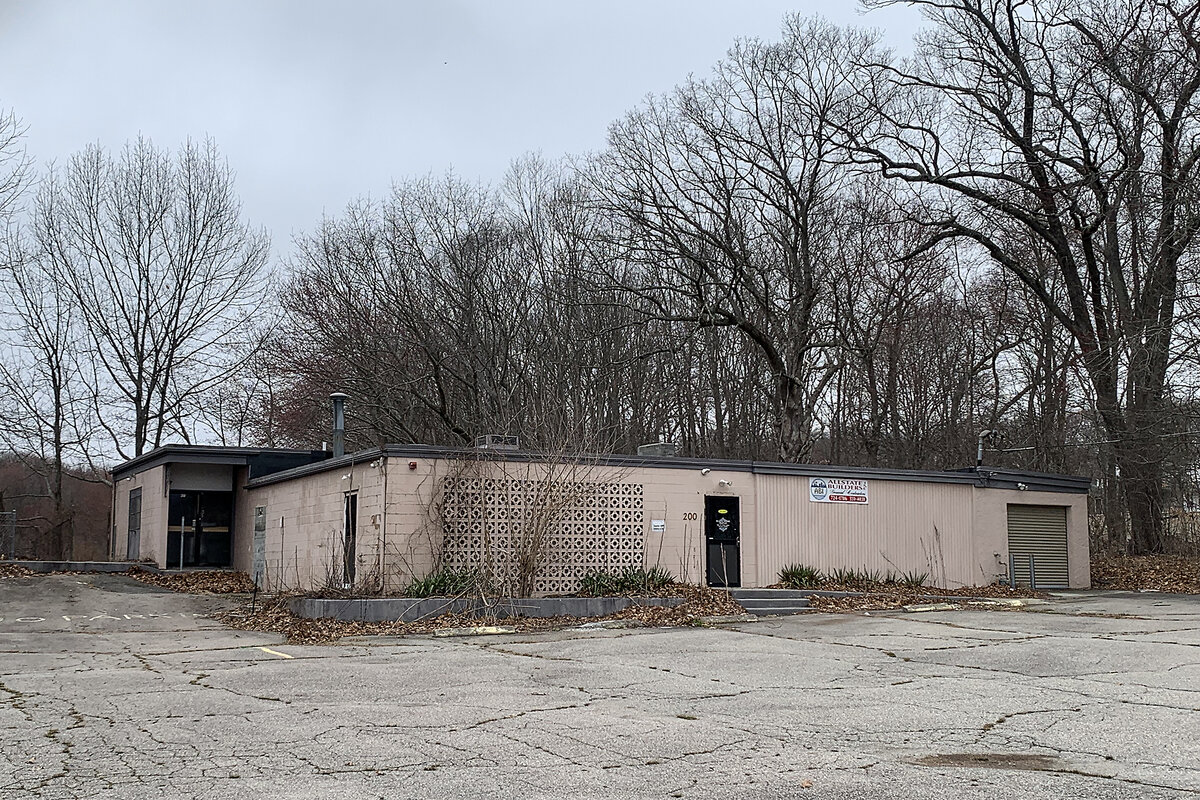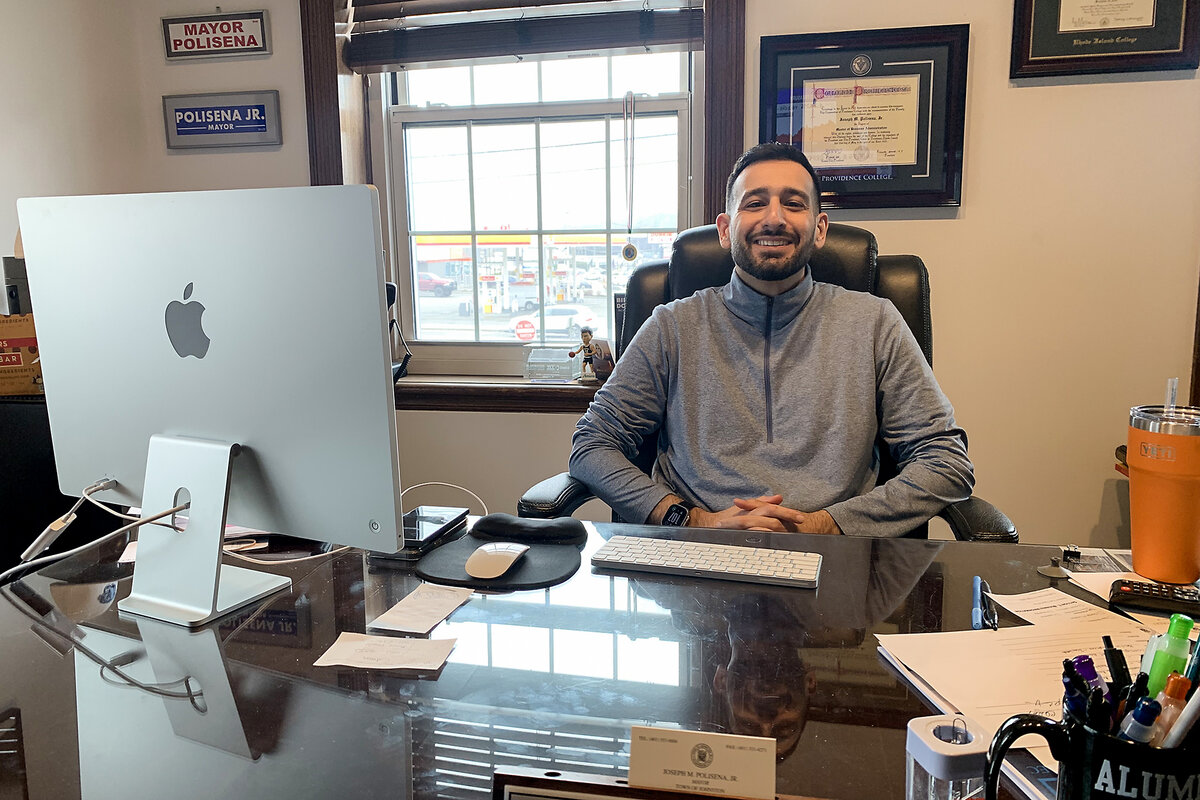They wanted to build affordable housing. The town took their land.
Loading...
| Johnston, R.I.
Ralph Santoro and Salvatore Compagnone found out their land had been seized through social media.
The 31-acre plot, where they had planned to build an affordable housing complex, lies on the edge of Johnston, a suburb of Providence.
The seizure was announced on March 14. Johnston Mayor Joseph Polisena Jr., a vocal opponent of the housing project, wrote on Facebook and X that the town had taken the land by eminent domain. The plan was to build a new government complex there.
Why We Wrote This
Can eminent domain be used to halt development in the name of public good? A Rhode Island case could set precedent in governments’ power over private development.
Mr. Santoro and Mr. Compagnone received orders to vacate the plot in one week, or be cited for trespassing. They and their relatives immediately took the matter to court.
“It felt like I was physically assaulted,” says Mr. Santoro, whose family purchased the land in the 1980s. “Our properties are a passion for us.”
For his part, the mayor says that he is acting to provide the police and fire departments with needed facilities. What is more, he says, such a large complex would be out of place in his small town.
The case touches on two hot-button issues: eminent domain – which allows governments to seize private land for public benefit, such as a highway – and affordable housing. The latter has become a rallying cry as home prices have soared, but as they do in Johnston, people typically want it built somewhere else. Both sides in the Johnston case also offer competing definitions of what the American dream looks like for the children of immigrants.
While a court temporarily returned the land to its previous owners, the ongoing federal case could set a precedent in governments’ power over private developments, legal and housing experts say. Can eminent domain be used to halt development in the name of public good?
If the landowners win, “It would make it harder to use eminent domain for ... NIMBY purposes,” says Ilya Somin, a professor at George Mason University who studies property law, referring to the “not in my backyard” acronym. “If the town wins, then it would make it easier.”
“Pretextual taking”?
In practice, eminent domain has sparked much controversy.
Landowners typically get many opportunities to challenge a seizure before it is finalized, and must receive “just compensation” if their property is taken, says David Schleicher, a professor of property and urban law at Yale Law School.
The “urban renewal” movement in the mid-20th century often used eminent domain to displace hundreds of thousands of people – disproportionately Black and low-income – as homes and businesses were razed to make space for highways, commercial development, and municipal buildings.
In a controversial 2005 decision, the Supreme Court expanded the use of eminent domain. It deemed it legal for cities to seize residential properties to sell to private developers, when the new owner will advance public interest.
The case, Kelo v. New London, allowed the Connecticut city to seize properties and sell them to a development corporation to build a facility for Pfizer. The planned development fell through. As of 2023, the houses had been razed but nothing had been built on the land.
But the Kelo decision also set limits on government power, Professor Somin says. Most notably, “pretextual taking” – a seizure whose official rationale is not the true motive – can still be illegal.
That’s what the Johnston landowners accuse the town of doing.
“They took this property because they wanted to stop an affordable housing project,” says Kelley Morris Salvatore, one of Mr. Santoro and Mr. Compagnone’s lawyers. She calls the seizure “municipal thuggery” and says that under state law, the town lacks the authority to take property for a municipal building.
The lawyers point to a public letter posted by Mayor Polisena in December 2024, three months before the seizure. In the letter, the mayor wrote he would “use all the power of government that I have” to stop the housing project.
“I ... have zero care of who I may offend in the process,” he wrote.
The mayor also said that the town would welcome single-family homes built on Mr. Santoro and Mr. Compagnone’s land, instead of multiunit affordable housing. There was no mention in the letter of building a new municipal complex.
The needs of the town
Mr. Polisena says the seizure was conducted lawfully and that it is the opposing side’s lawyers who do not understand state law.
He has been looking for land for a new municipal complex since 2023, he says, as the Town Hall, fire station, and police station are in poor condition.
The fire station does not have a bathroom or shower for female firefighters, and Johnston Police staff has doubled since the police station was built decades ago, he explains.
After some potential locations fell through, he found the “perfect” spot in November 2024, when he received Mr. Santoro and Mr. Compagnone’s proposal to build 252 units of affordable housing on their 31-acre plot.
“I just put two and two together,” Mr. Polisena says in an interview in Town Hall.
He believes a 252-unit affordable complex would overwhelm the finances and infrastructure of a suburban town of 30,000.
“I don’t know any other apartment complex anywhere else in the state ... where 2% of a municipality’s population would come from one apartment complex,” he says.
Professor Somin compares the Johnston seizure to a 2024 case, Brinkmann, et al. v. Town of Southold, New York.
After making several attempts to block the construction of a hardware store, the town moved to seize the land, proposing to make it a “passive park.” The space, now public, was left as it was, with no park facilities added.
The court ruled in favor of the town.
Differing ideas of the American dream
Mayor Polisena, who hopes to see more single-family homes built in Johnston, says they represent “the American dream.”
His ancestors, who came from Italy, first settled in Providence, and moved to suburban and rural areas after building up wealth, Mr. Polisena says. He sees his family’s trajectory as a typical immigrant story.
“I think that single-family homes are the predominant way that people – I think not just in my community, but throughout the country ... strive for,” he says. “I don’t think people are going to leave their single-family homes and move into low-income apartment complexes.”
Mr. Santoro and Mr. Compagnone are also the children of Italian immigrants.
Mr. Santoro says he grew up in Providence, and lived in Johnston for “a brief period.” His parents ran a plastering business and often worked in Johnston. His partner, Mr. Compagnone, is a fourth-generation homebuilder whose ancestors “built many of the homes in Johnston,” Mr. Santoro adds.
The two currently manage “70 to 100” rental units with affordable rent, Mr. Santoro says.
“When you think about affordable housing, these are just young professionals who are starting off on their career,” Mr. Santoro says. “It’s a policeman; it’s a teacher who might be making $45,000 to $60,000 a year. ... It’s so astronomical to come up with a down deposit” for a single-family home.
A Rhode Island housing law requires communities to maintain 10% or more of their year-round housing stock as affordable housing. If they are below that percentage, the law limits local governments’ ability to block affordable housing projects.
In Johnston, about 8% of year-round housing qualifies as low- and moderate-income housing.
When Mr. Santoro attended a planning board meeting last year, he says some of the responses shocked him. Some board members made “very derogatory statements” about a public housing project in Providence and compared it to his proposed complex.
“I didn’t grow up too far from that public housing project,” he says. “And my father was an immigrant, OK?”
“We were just taught to work hard all the time. And hard work would pay off,” he continues. “And we’re just trying to give back a little bit right now.”







